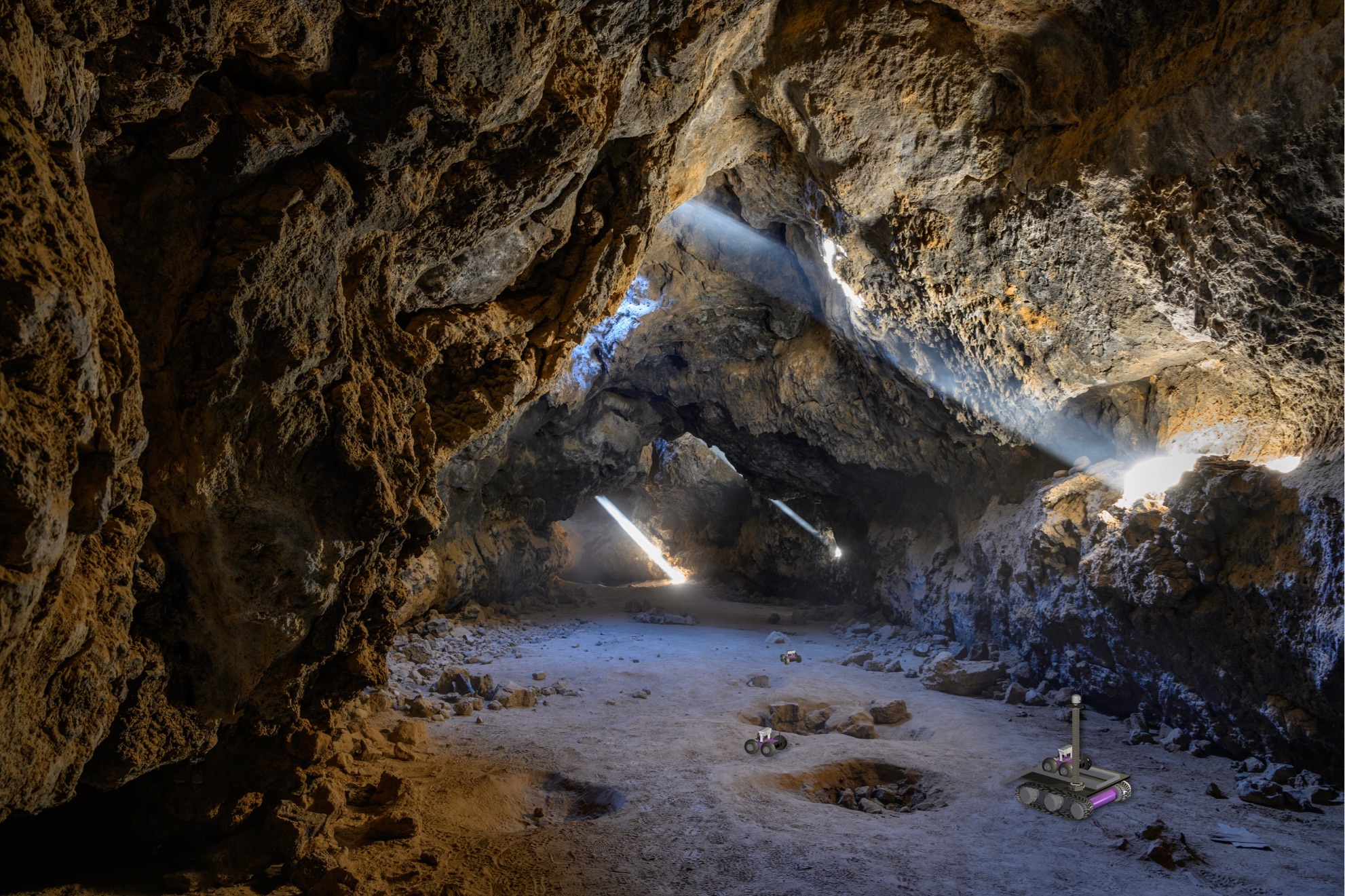Colonization of the Moon and Mars is a very difficult engineering task. The main problem for future people in the new worlds will be protection from harmful cosmic radiation and the influence of weather phenomena. One of such safe places for astronauts may be the construction of housing under the surface. Scientists recommend using natural lava tubes for this. Lava tubes beneath the surface are believed to exist on both Mars and the Moon, providing a potential haven for future colonists.

“Lava tubes and caves will be an ideal habitat for astronauts, because you don’t need to build special structures. You will be reliably protected from harmful cosmic radiation. Therefore, all you have to do is to equip a new home,” said lead author of the study Wolfgang Fink.
Ideas from the fairy tale “Hansel and Gretel”
A study by engineers from the University of Arizona suggests a new method of using robots to explore lava tubes. A group of scientists suggests using several robots connected by a communication network. In order to safely explore and not get lost in an extensive network of tubes, robots will use a method borrowed from the fairy tale “Hansel and Gretel”.
“In the famous fairy tale, Hansel and Gretel threw bread crumbs on the ground to make sure they would find their way back. In our scenario, the “breadcrumbs” will be miniature sensors that will guide the rovers in the subsurface environment,” Fink said.
This system means that rovers can explore different types of environments without the need for engineers to anticipate what conditions they will encounter in advance. By forming a mesh connection, a group of robots can communicate with each other and effectively exchange information. Having formed the concept, the group is working on creating a mechanism that will allow research robots to deploy communication nodes independently. This can help in the study of unknown environments, for example, lava tubes.
The study is published in the journal Advances in Space Research.
Follow us on Twitter to get the most interesting space news in time
https://twitter.com/ust_magazine

